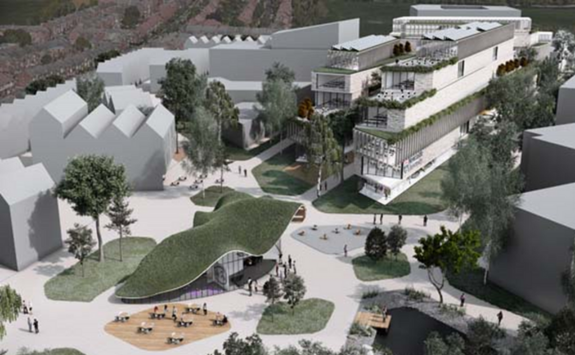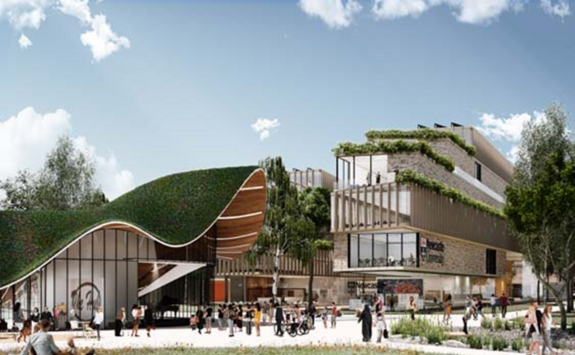History of Newcastle General Hospital
Today, the 29-acre site is the planned location for a world-leading ‘living laboratory’ for ageing research which has recently received a £10m funding boost in the Government’s budget. Having been bought by Newcastle University in 2017, it is hoped the former hospital grounds will be transformed into the UK’s first health innovation neighbourhood, creating space for research to come together with business, government and people to shape the future of health and ageing.
To celebrate, we dug into the archives and spoke to our alumni community to discover the history of Newcastle General Hospital and the important role it has played in our region since the late 1800s.
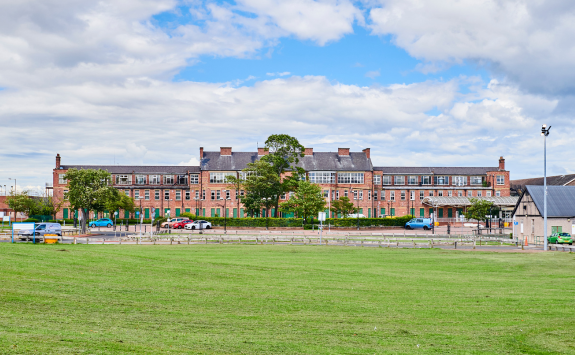
Serving the city’s poor
The foundations of the Newcastle General Hospital were laid in 1839, when the Newcastle Board of Guardians decided to build a Union Workhouse on Westgate Hill to centralise the facilities for Newcastle’s poor. At the time, those most in need were being cared for in inadequate poor houses across St John’s, St. Nicholas’, St. Andrew’s and All Saints’ parishes.
By 1859, it became apparent that separate facilities for the sick in the workhouse were needed. A new hospital was commissioned and designed by Septimus Oswald (whose son Joseph Oswald was the architect of Newcastle’s Central Arcade and the offices of Newcastle Breweries in Haymarket), officially opening a decade later in December 1870.
Development of the site continued into the early 20th century, so by the beginning of the first World War the hospital offered 500 beds in 5 buildings and even had a maternity department.
Changing name
To separate from the changing views and stigma of the workhouse, the hospital was renamed Wingrove Hospital in 1921, before changing name again to The General Hospital in 1948 when it became part of the new National Health Service.
For decades, the Newcastle General Hospital was the main hospital serving the city and hosting many medical and dental students from the university for placements. But by 2010, most of the services offered at the General had been moved to the newer Freeman Hospital and Royal Victoria Infirmary, so that all that remained was a walk-in centre for minor ailments and injuries.
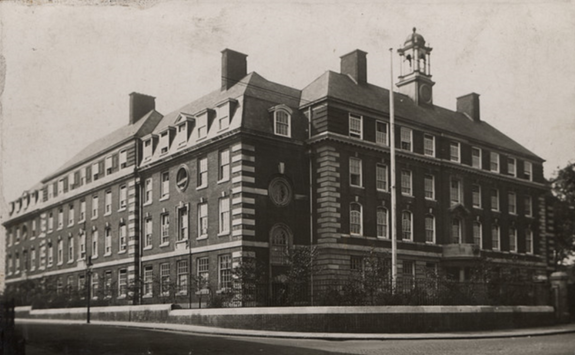
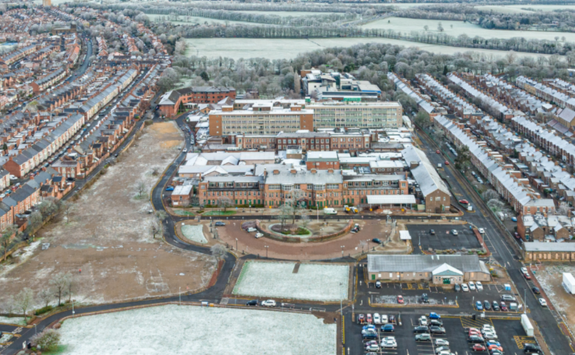
Training the next generation of doctors
As well as serving the local community, Newcastle General Hospital welcomed many students into its wards over the years to help them develop their professional skills. This included medicine and dentistry students, but also those studying the likes of chemistry, speech therapy – and even social policy!
Dr Paula Waterhouse, who gained her BDS from our School of Dental Sciences in 1990 and is now a Professor of Paediatric Dentistry at the University, reflected:
“As a dental student in the 1980s, we had our ‘medicine and surgery’ course ward rounds at Newcastle General Hospital with a super consultant called Mr Parott. He was a great teacher and I have very happy memories of my time there.
“I remember a large teaching lecture theatre where local patients willingly came and told us about their conditions – this provided us students with real insight from lived experience. Once I qualified, I remained at Newcastle General Hospital as a House Officer, assisting in theatre and doing oral health screens for children in the paediatrics immunology department.”
Social Policy alumna Anna Gaughan was a registered general nurse before she embarked on her degree at Newcastle University in 1989. She told us of the “happy days” spent working as a bank-nurse at all the local hospitals, including the General, to fund herself through her studies. Medical graduate Dr Louise Holly fondly remembers “the best sausage sandwiches” being available there and fellow medical graduate Phil Jennings also recalls the fun had on a full-sized snooker table in the Mess!
The time spent at Newcastle General Hospital not only helped students gain the necessary experiences to qualify as medical professionals, in some cases it also shaped their future specialisms. For example, Speech Therapy alumna Jo Scrivens’ time at the hospital “really fired [her] interest in treating voice difficulties” and Chemistry graduate Dr Martine Barnes told us:
“I was fortunate to undertake my final year Chemistry undergraduate research at Newcastle General Hospital in the Neurochemistry department, in a lovely research team led by Dr David Mantle.
“While there, I was afforded the opportunity to work with the brain tissue of a young man tragically killed in a motorbike accident, whose parents had donated his organs for science research. From this we were able to test out assays for the rejuvenation of brain enzymes, commonly inhibited in neurological diseases such as Alzheimer's, and determine the antioxidant properties of oriental plant oils as rejuvenators of these brain enzymes in small concentrations.
“Our research was published in a journal in 1998 whilst I was still an undergrad – my first publication! – and the project later inspired me to later follow a PhD in Benzene carcinogenicity. I’m forever grateful to the donor family for the impact it made in the specialist area of neurological research, and for which l now find myself as a Neuro patient!”
Looking to the future
In the Budget announced in early March 2024, £10 million was pledged towards a Health Innovation Zone through the North East Mayoral Combined Authority Trailblazer Deal, which will be formally ratified by the new North East Mayor and Cabinet later this summer.
Plans for the Health Innovation Neighbourhood at the former Newcastle General Hospital site (also previously known as the Campus for Ageing and Vitality) were approved by the council in 2022, and include:
- intergenerational residential and later living with green and blue space to encourage activity and play;
- interdisciplinary primary healthcare provision incorporating education and research;
- interwoven with a ‘spine’ of research and innovation in both academic and commercial infrastructure.
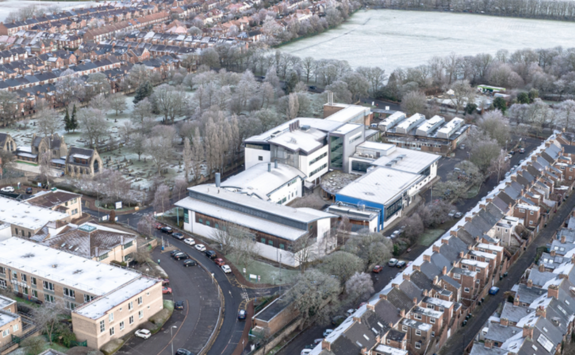
The existing biomedical research building (pictured above) will remain on site and be integrated into the neighbourhood, which will also include a commercial boulevard at the centre of the site to create a focal community space and cultural hub. Current plans indicate the neighbourhood will be complete by 2035.
Addressing local health inequalities and bridging the North-South health divide is a core ambition for the scheme. Working with partners, Newcastle University will identify the most effective means by which neighbourhoods can promote healthy and sustainable living and ageing. The findings will then be used to influence healthy neighbourhood developments elsewhere in the UK and around the world.
